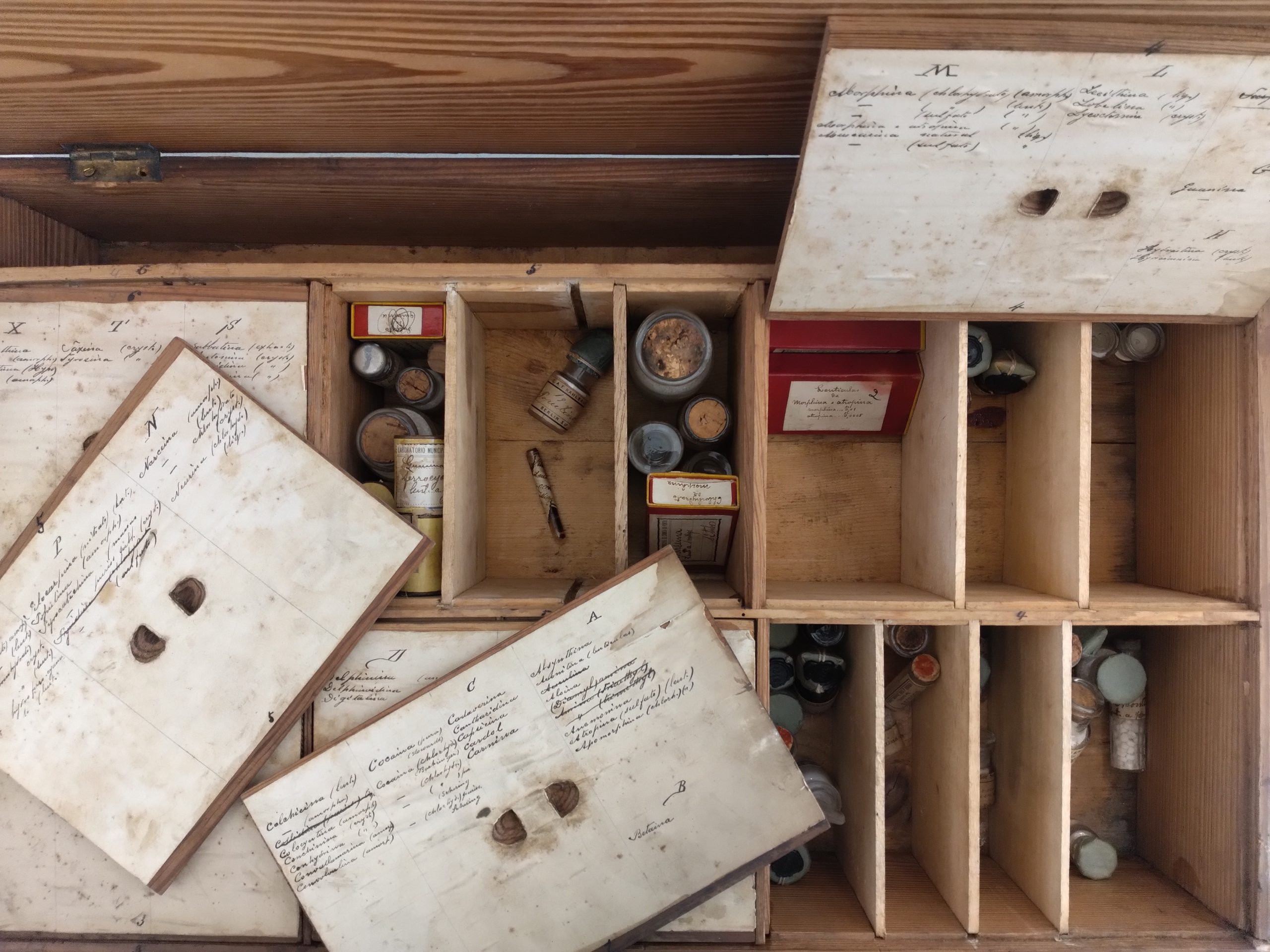Crime at Rua das Flores, or The Alkaloid Malediction
Mário Sampaio, a 14-year-old boy, was murdered in 1890. It wasn’t the only case in the family, wealthy linen merchants: before the death of the child, and after the marriage of his aunt Maria das Dores, a series of deaths of direct relatives of Maria das Dores followed, including those of Guilherme and José, Mário’s father and uncle, respectively. The case was a media spectacle, eagerly followed by the public and much discussed, essentially for two reasons: the cruelty of the acts and the innovation of the expertise used for its resolution. In fact, suspicion fell on the boy’s uncle, Vicente Urbino de Freitas, Maria das Dores’ husband, who was accused of wanting to take possession of the family fortune through his wife. The coldness and ruthlessness with which he [supposedly] orchestrated the deaths of adults and children generated countless controversies, in particular due to the detail that Urbino de Freitas was a prestigious surgeon, and a lecturer at the Oporto Medical School, and therefore the one to whom the victims turned when the symptoms of poisoning began to appear.
He could have escaped unscathed, enriched by the large inheritance. However, the odds were not in his favour: since the evidence was circumstantial, a team from the Municipal Chemical Laboratory, led by Professor Ferreira da Silva, was called in to carry out an expert examination of the victims’ bodies. Three years later, and after a media war fomented by Urbino de Freitas’s defence, consisting of academic experts from Coimbra and renowned German chemists, the toxicological analyses would support the condemnation of the distinguished doctor from Porto. The forensic report by Ferreira da Silva’s team revealed the presence of morphine, delphinine and narceine in the young Mário’s viscera and urine at levels high enough to cause death. By carrying out tests that represented a notable advance in Forensic and Toxicological Chemistry, Ferreira da Silva’s innovative report became an academic reference, and the Laboratory he ran continued to be requested for expertise in medico-legal cases. It’s the beginning of Scientific Toxicology in Portugal!
However, the matter didn’t stop there. Convicted in 1984, Urbino de Freitas was deported to Brazil, where he was forbidden to practise medicine. He died in Portugal, always claiming to be innocent and relying solely on the unconditional devotion of his wife, Maria das Dores. Dissatisfied with the fate of her husband, whose inculpability she had never doubted, Maria das Dores cursed the Municipal Chemical Laboratory when she learnt of the verdict, evoking not particularly divine creatures, and including in her curse all the material used in the expert examination, highlighting ‘the ill-fated box of bottles and vials’, referring to the box of alkaloids used by Ferreira da Silva during the Urbino Freitas trial.
Malediction or not, the fact is that the Municipal Laboratory would close in 1907, becoming part of other institutions, while the building itself would end up being demolished to make way for the Avenida dos Aliados around 1916. The more sceptical ones say that it means nothing, since the collection of tools and utensils, along with the library, weren’t lost, becoming part of the Analytical Chemistry Laboratory of the Polytechnic Academy, created in 1910, and integrated into the Faculty of Sciences of the University of Porto (latter on, Royal University of Oporto) during the following year. What these non-believers can’t explain are the tremors that often occur in the vials containing Ferreira da Silva’s alkaloids, witnessed both by Her Majesty Queen Augusta Vitória, in 1918, and later by Her Majesty Queen Maria III, in 1920, both on official visits to develop and promote the Kingdom’s Sciences. ‘Some small earthquake,’ declared Queen Mary III, softening the mood of those present.
However, those who work in the lab assure they sometimes hear the voice of a child asking for relief, or indignant declarations of innocence, both coming from the ‘the ill-fated box of bottles and vials’.
 «Caixa de Alcaloides do Professor Ferreira da Silva» (fotografia de Inês Montenegro, tirada no Laboratório Ferreira da Silva, Museu de História e Ciência Natural [MHNC-UP])
«Caixa de Alcaloides do Professor Ferreira da Silva» (fotografia de Inês Montenegro, tirada no Laboratório Ferreira da Silva, Museu de História e Ciência Natural [MHNC-UP])
https://museuvirtual.trp.pt/pt/processos-emblematicos/vicente-urbino-de-freitas
Comments